(1) Ad-nai spoke to Moshe, saying: (2) Speak to Aharon and say to him, “When you raise up the lamps, at the front of the lampstand, the seven lamps will give light.” (3) Aharon did so: at the front of the lampstand, he raised its lamps as Ad-nai had commanded Moshe. (4) Now this is how the lampstand was made: it was hammered work of gold, hammered from base to petal, according to the pattern that Ad-nai had shown Moshe, so was the lampstand made.
~ Why does the text need to say that the Menorah was shown to Moshe? What are the limits of the descriptions found in the Torah?

1st century BCE - 2nd century CE. This ancient ring made of bronze, has two menorahs one on each side, Israel in Aramaic script.
https://www.liveauctioneers.com/item/49498560_aphrodite-gallery-holy-land-bronze-ring-with-menorahs
An incredible collection of images of the Menorah can be found at: https://menorah-bible.jimdofree.com/english/ancient-menorahs/ - just a word to the wise, this is a Rapture site, but the collection of images is very extensive and has interesting links.
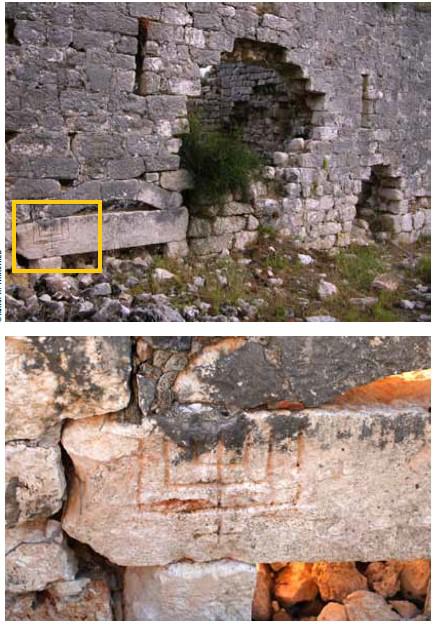
2nd-1st century BC. The ancient synagogue in Çatiören (an archaeological site in Cilicia, Mersin Province, Turkey), which Dr. Fairchild discovered in the spring of 2007. Read more here: https://www.huntington.edu/uploads/page/TurkeysUnexcavatedSynagogues.pdf

40 - 37 B.C.E - a prutah coin, with Showbread table and Menorah, coined to honor last Hasmonean king, Mattathias Antigonus.
https://ancientcoinage.org/coinage-of-aelia-capitolina.html
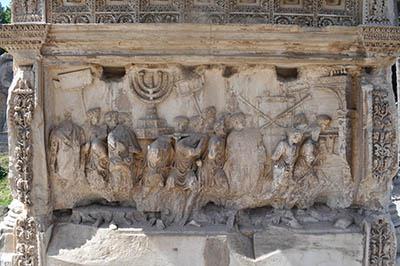


1167-1168. Commentary on Mishnah (Neziḳin and Ḳodashim) by Maimonides Moses [author]. Drawing from the hand-written copy of the Rambam's Mishneh Torah (compiled between 1170 and 1180).
https://digital.bodleian.ox.ac.uk/objects/b7e0b998-0a85-4a30-851f-58d67be5247d/surfaces/695e8208-3910-4cc0-b830-7821a44d2a44/
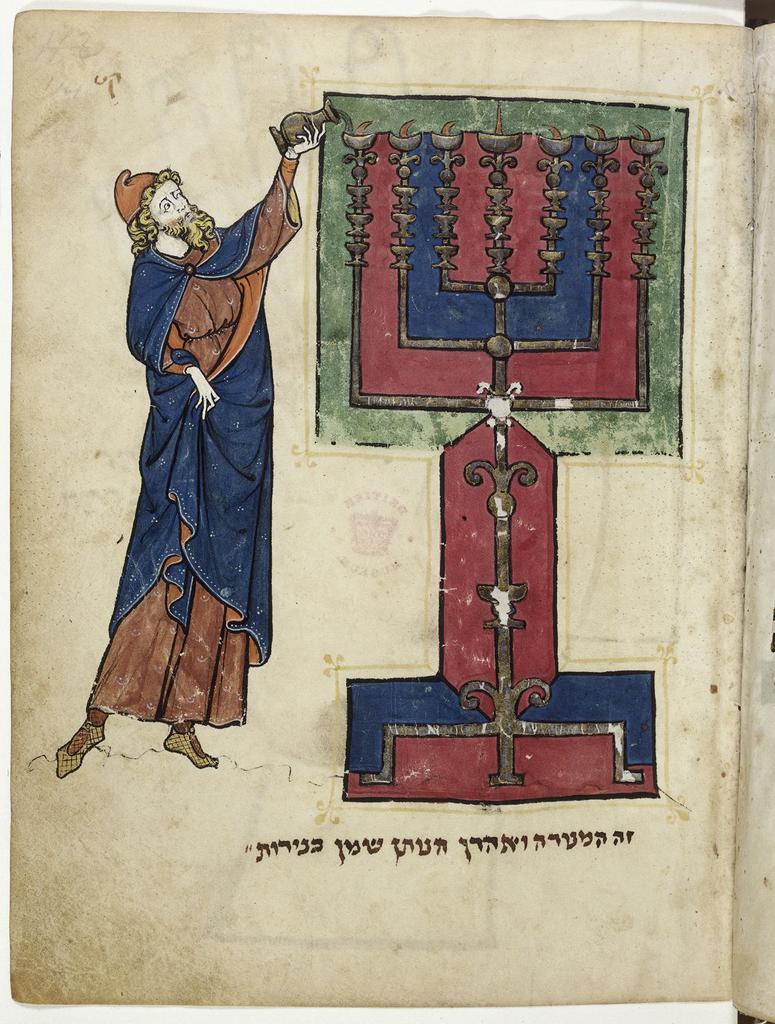

http://www.bl.uk/manuscripts/Viewer.aspx?ref=add_ms_11639_f114r
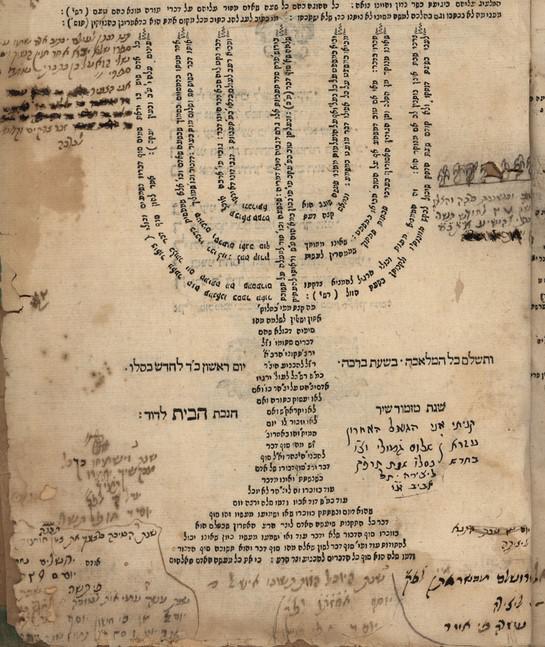
Yalkut Shimoni with the commentary of Berit Avraham was published in Livorno, Italy. This one includes a menorah created via micrography, but unlike the others that appear at the front of the books, this one appears at the end. It is a colophon, a statement at the end of a book, giving information about its authorship and printing. The Menorah was chosen given that the date of printing was Sunday, the 24th of Kislev, and the year was "Mizmor Shir Chanukat HaBait LeDavid" (5417 or 1656).
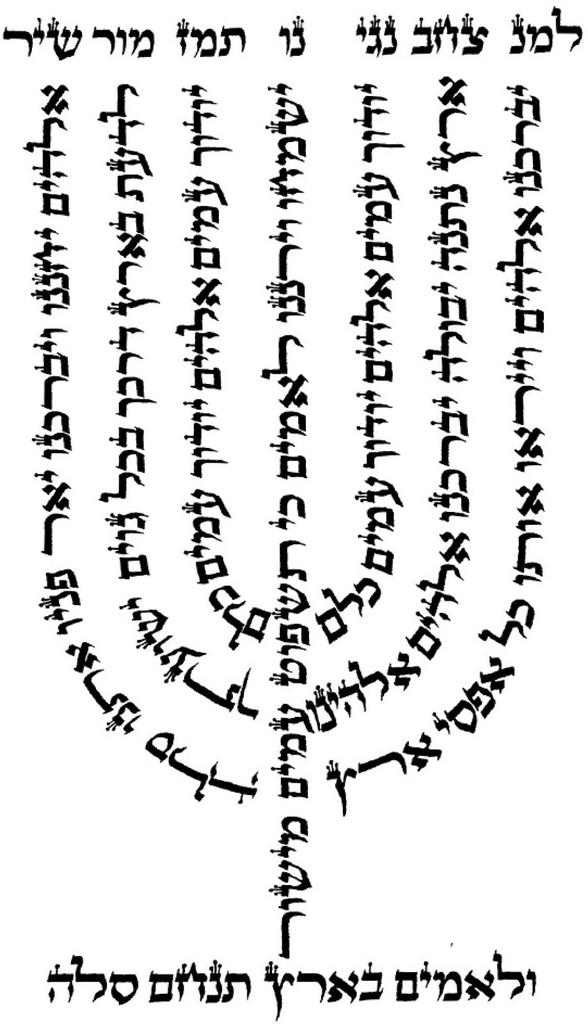
(יא) קָם תָּנָא חֲדָא וְאָמַר, (ודאי) רַעְיָא מְהֵימָנָא וַדַּאי הָכִי הוּא, וְלָךְ מָנֵּי לְמֶעְבַּד כֻּלְּהוּ, הֲדָא הוּא דִּכְתִּיב, וְעָשִׂיתָ מְנוֹרָה. וְעָשִׂיתָ שֻׁלְחָן. וְהָכִי בְּכֹלָּא, וּרְאֵה וַעֲשֵׂה, וּמִכֹּלָּא לָא אִתְקָשֵׁי לְךָ לְמֶעְבַּד, אֶלָּא תְּלַת מִלִּין דִּרְשִׁימִין בְּאַתְוָון דִּשְׁמֶךָ, מְ''נוֹרָה, שְׁ''קָלִים, הַ''חֹדֶשׁ. אֲמַאי אִתְקָשֵּׁי לָךְ.
(יב) אֲמַר לֵיהּ, סָבָא סָבָא, אַתוּן מְפִיקִין
(א) קוּשְׁיָא דָּא דְּאִתְקָשֵׁי לִי, מִן מִקְשָׁה תֵּיעָשֶׂה הַמְּנוֹרָה. וַדַּאי מָאנָא דְּקוּדְשָׁא בְּרִיךְ הוּא, אִיהִי שְׁכִינְתָּא, דְּאִיהִי מָאנָא לְשַׁמְּשָׁא לְבַעְלָהּ, אִיהִי מְנַרְתָּא דִּילֵיהּ, דְּאִתְּמַר בֵּיהּ, (תהילים קי״ט:קס״ד) שֶׁבַע בַּיוֹם הִלַּלְתִּיךָ, דְּאִינּוּן: הַגְּדוּלָה, וְהַגְּבוּרָה, וְהַתִּפְאֶרְת, וְהַנֵּצַח, וְהַהוֹד, יְסוֹד, וּמַלְכוּת. שֶׁבַע כְּלִילָא.
(ב) מִשֶּׁבַע דַּרְגִּין אִלֵּין, שְׁלֹשֶׁת קְנֵי מְנוֹרָה מִצִדָּה הָאֶחָד, גּוּפָא וּתְרֵין דְּרוֹעֵי דְּמַלְכָּא. אִיהוּ נֵר מִצְוָה, לְאַנְהָרָא בְּהוֹן. וּשְׁלֹשָׁה קְנֵי מְנוֹרָה מִצִדָּה הַשֵּׁנִי, אִינּוּן תְּרֵין שׁוֹקִין, וּבְרִית. וְאִיהוּ נֵר מַעֲרָבִית, לְאַנְהָרָא בְּהוֹן. מְנַרְתָּא דְּמַלְכָּא אִתְקְרִיאַת, וְאִיהִי נֵר לְאַנְהָרָא בֵּיהּ נֵר מִצְוָה, דְּאִתְּמַר בֵּיהּ (תהילים י״ט:ט׳) מִצְוַת ה'' בָּרָה מְאִירַת עֵינָיִם.
(ג) וּמַאן רִישָׁא דִּמְנַרְתָּא, בִּינָה ה' עִלָּאָה, דְּאִית לָהּ תְּלַת קָנִין, בְּדִיּוּקְנָא דָּא ה', תְּלַת וָוִי''ן, דְּאִינּוּן תְּלַת אֲבָהָן. ה' תַּנִּינָא, ג' קָנִים תִּנְיָינִין בְּדִיּוּקְנָא דָּא ה', (ס''א תלת ווין) דְּאִינּוּן נְצַח הוֹד יְסוֹד. ו' מְנַרְתָּא דְּאֶמְצָעִיתָא בֶּן יָ''הּ. עַל שְׁמֵיהּ אִתְקְרֵי בִּינָה. אִיהוּ כָּלִיל ו' קָנִין לְתַתָּא, בְּחוּשְׁבָן ו', בְּו' קָנִין דִּילֵיהּ. י' (משלי י״ב:ד׳) אֵשֶׁת חַיִל עֲטֶרֶת בַּעְלָהּ, תָּגָא דְּסֵפֶר תּוֹרָה, כְּצוּרַת ז' מִסִּטְרָא דְּעָלְמָא דְּאָתֵי, לָאו אִיהִי מָאנָא לְגַבֵּיהּ, וְלָאו מְשַׁמְּשָׁא לְגַבֵּיהּ, אֶלָּא עֲטָרָה עַל רֵישֵׁיהּ. אֲבָל בְּעָלְמָא דֵּין, אִיהִי כְּגַוְונָא דָּא, הוה''י אִיהוּ מָאנָא תְּחוֹתֵיהּ, שִׁמּוּשָׁא דִּילֵיהּ, בְּכָל סְפִירָה דִּילֵיהּ, בְּכָל אֵבֶר דִּילֵיהּ, בְּכָל מִדָּה דִּילֵיהּ.
(ד) וּבְגִין דָּא, י' דָּא, לְזִמְנִין אִיהִי תְּחוֹתוֹהִי, לְזִמְנִין עַל רֵישֵׁיהּ, לְזִמְנִין בְּאֶמְצָעִיתָא. עַל רֵישֵׁיהּ יְהוָֹ''ה (תהילים קי״ח:כ״ב) אֶבֶן מָאֲסוּ הַבּוֹנִים הָיְתָה לְרֹאשׁ פִּנָה. וְדָא (ויקרא כ״ד:ב׳) לְהַעֲלוֹת נֵר תָּמִיד, דְּאִיהוּ י' עַל הו''ה מִסִּטְרָא דִּמְנַרְתָּא. בְּאֶמְצָעִיתָא, מַחֲצִית הַשֶּׁקֶל, הֲדָא הוּא דִכְתִיב, (שמות ל׳:י״ג) זֶה יִתְּנוּ, כְּגַוְונָא דָּא הוי''ה. בְּסוֹפָא, בְּמַשְׁכְּנָא, כְּגַוְונָא דָּא הוה''י, חָמֵשׁ אַמּוֹת אֹרֶךְ, מִסִּטְרָא דְּה' עִלָּאָה, וְה' אַמּוֹת רֹחַב, מִסִּטְרָא דְּה' תַּתָּאָה. וְאַמָּה: ו'. וַחֲצִי הָאַמָּה: י'. וְכֹלָּא אִתְרְמִיז בְּאָת ו'.
(11)A tanna stood and said: (clearly this is) the faithful shepherd, clearly here he is, and to you God has commanded to do [make] all, as it is written: "and you will do the menorah" "and you will do the table"and so with all, and you see and you do. And nothing was hard for you, with the exception of three things that are hinted in the letters of your name: Menorah SHekalim and HaChodesh. Why were those hard for you?
(12) He [Moshe] said to him [the tanna]: grandpa, grandpa, y'all learned this difficulty for me
(1) from the verse "of hammered work the menorah shall be made [implication is of itself, and not by Moshe]" (Exodus 25:31). Clearly the vessel of the Holy One of Blessing is the Shechinah, and she is the vessel that helps Her husband, she is His menorah, as it is written about Him: "I praise You seven times each day [for Your just rules]" (Ps. 119:164) - and they are: Gedulah, and Gevurah, and Tiferet, and Netzach, and Hod, Yesod and Malchut. A group of seven.
(2) From those seven ways, three are the shafts of the menorah from one side, the body and two arms of the king, They are "the mitzvah is light" (Prov. 6:23) to illuminate through them. And the other three shafts of the menorah from the other side are the legs and the covenant. And they are the "light from West" (Tamid 30b) to illuminate through them. This is called the Menorah of the King, and this is the light which illuminates the light of the mitzvah, of which it is said "the mitzvah of Ad-nai illuminates the eyes" (Ps. 19:9).
(3) And what is the head of the Menorah? The Upper Binah [Understanding] of Hashem, that has three shafts, in the likeness of Hashem, three vavs, which are the three patriarchs, which are Netzach, Hod and Yesod. And the middle vav of the Menorah is the Son of Yah [BeN Y"aH] and on his name she is called BINAH. And they encompass the six lower shafts, summing six, in his six shafts. [Seven shafts are seen in HAVAYAH without the YUD, so now we explain the] YUD - "a woman of valor is the crown of her husband" (Prov. 12:4) that is the crown of the Sefer Torah, like the form of the ZAYIN [that is a YUD on top of a VAV, similar to a crown] of the world to come. There, She [Shechinah] is not a vessel for Him, nor does She help Him, rather, She is a crown on His head. But in this world, it is this way, HEY VAV HEY YUD is the lower vessel, that helps Him, in all His counts, in all His limbs, in all His traits.
(4) And in this way, this YUD, sometimes is under Him and sometimes is on His head, and sometimes is in the middle. On the head of AD-NAI: "the stone that was rejected by the builders became the head stone" (Ps. 118:22). And this is "to raise the eternal light" (Lev. 24:2), which is the YUD over HEY VAV HEY from the side of the Menorah. In the middle, the half SHekel, as it is written "this they shall give" (Ex. 30:13), in the way of HavaYah. At the end, in the Mishkan, in the way of HEY VAV HEY YUD. "Five cubits high" on the side of the Upper Hey, and "five cubits long" on the side of the Lower Hey. And "a cubit" - this is the vav. "And half a cubit": the Yud. And all is hinted by the vav.
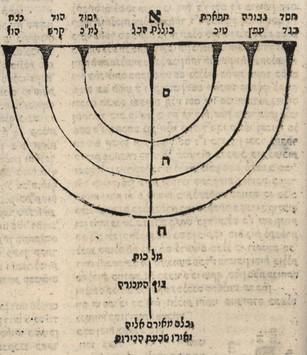
Moshe Cordovero’s (1522-1570) illustration in his first book, Pardes Rimonim. This is a kabbalistic representation of the sefirot overlaid on the menorah frame.
בהעלתך lit., WHEN YOU MAKE [THE LIGHTS] RISE — Because the flame rises upwards (עולה), an expression denoting “ascending” is used of kindling them (the lights), implying that one must kindle them until the light ascends of itself (Shabbat 21a). Furthermore our Rabbis derived from here (from the expression בהעלתך) that there was a step in front of the candelabrum upon which the priest stood while preparing the lights (Sifrei Bamidbar 59).
ובזה יבואר מצות הדלקות נרות המנורה שהיא באמת בכל אדם ובכל זמן ע"י הכהן כי כבר זכרנו שהאדם נק' נר כי רמ"ח איבריו ובתוכו נפש רוח הרי גי' נ"ר גם ר"ת נ"ר הוא נפש ורוח הגם שיש באדם נפש רוח ונשמה מ"מ ע"י חטא האדם נסתלק הנשמ' ונשאר נ"ר וכ"כ האלשיך והכהן שרימז הכתו' בו כי שפתי כהן ישמרו דעת תורה יבוקש מפיהו רבים השיב מעון וגו' וכמ"ש בזוהר זכאה מאן דאחיד בידא דחייבא וכו' ואגב נ"ל להזכיר מה ששמעתי מוסר בענין הדורש טו' לעמו לדבר מוסר להוכיח בשער איך לדבק את עצמו בו י"ת ואח"כ יכלול את השומעים באחדות שידבק אותם בדבריו אליו ית' וזהו שאמר שאוחז ביד דחייבא להעלותן ודפח"ח.
(104) And here the mitzvah of lightning the Menorah (Numbers 8:2) will be explained, that truly it is [done] in every human being and in every time through the kohen. We already mentioned that a person is called candle/light: the 248 members and inside them soul (Nefesh) and spirit (Ruach), behold, these are candle (NeR). Even though a person has also a Neshamah (essence) in any instance, through a sin, the Neshamah separates from the person, and only soul and spirit are left. And the Alshich has written that the kohen is hinted at by the text, "the lips of the kohen guard knowledge and they seek Torah from his mouth" (Malachi 2:7) "he held many back from iniquity" (Malachi 2:6); and so too is mentioned in the Zohar "whoever seizes the hand of an evildoer and enables him to leave the evil path, rises three levels, which does not happen to other human beings, etc (Zohar 2:128b:3); and it seems to me to recall what I heard as way of musar [on the verse] "seeks the good of his people" (Esther 10:3) - the one who speaks of ethics and admonishes at the gate how should a person cling to the Holy One of Blessing, and after that all those who listen will be connected in unity, so that the speaker would make the words of the Holy One cling to them, and this is "to seize the hand of the evildoer" to raise them. And these are wise words.
ואמר, אל מול פני המנורה יאירו שבעת הנרות, ר"ל שראש הדור המכוין להעלותן נקרא פני המנורה, כמו פני הדור. וכשאחד מסתכל בפנים מאירות אל חבירו, על ידי אחדותן והתכללותן זה עם זה, ראש הדור עם דורו עמו, ובני דורו עם ראש הדור, אז על ידי הדבקות זה עם זה עולין, וכמ"ש בפסוק (שמות יט, ב-ג) ויחן שם ישראל אז ומשה עלה אל האלהי', יעו"ש בכתבי. וז"ש כאן, בתנאי, אל מול פני המנורה יאירו שבעת הנרות - כי עולם חסד יבנה (תהלים פט, ג), ונקרא שבעת ימי הבנין, ולזה יש ז' מדריגות בישראל, ועל ידי התכללותן אל מול פני המנורה [וג"כ משמע מנורה העליונה כנודע] יאירו להמשיך ג"כ הנשמה אל נפש ורוח, ומשכן הנשמה בראש האדם שיש בו ז' קני מנורה, סוד ז' שערים הנז' בספר יצירה (פ"ד מ"ו).
(222) 222 And it said: "in front/on the face of the Menorah, the seven lights will illuminate" (Numbers 8:2). Meaning - the the leader of the generation that intends to raise the people is called "the face of the Menorah", just as they are "the face of the generation." And when a person looks at the illuminated face of their friend, through their unity and their integration with one another, the leader of the generation with the generation of their people, and the people of the generation with the leader of the generation, then through the clinging of one to another they raise, as it is written in the verse "and there Israel encamped" and then "Moshe went up to E-lohim" see there in my writings. And this, that is written here, under a condition "in front/on the face of the Menorah, the seven lights will illuminate" - "because the world is built through lovingkindness [chesed]" (Ps. 89:3), and this is called the seven days of building , and through that we know there are seven levels in Israel, and through their integration in front of the Menorah [which also teaches this to be in front of the Upper Menorah, as known] the lights will illuminate, to continue the essence also through soul and spirit, and the Tabernacle of the essence is also in the head of a person, that has seven shafts of the menorah, which are the secret of the seven gates mentioned in the Sefer HaYetzirah (Sefer Yetzirah 4:4).
(רכג) ויתפרש בג' פנים, וכולן כאחד נמשכין זה מזה. ור"ל כי יש לפרש אל מול פני המנורה אל פרטות האדם, כי משכן הנפש והרוח הוא בכבד ולב, ומשכן הנשמה הוא במוח. ובתיקון האדם מעשיו אז ממשיך הנשמה לשרות במוח, שישוב ויאיר אל ז' קני המנורה שבראש השייך לנשמה, ומשם יומשך הארה לנפש ורוח ברמ"ח איבריו. וכל זה דרך פרט.
(223) 223 This can be explained in three ways, and they follow each other. Meaning, one needs to explain "in front/on the face of the Menorah" (Numbers 8:2) regarding the parts of the human being: the tabernacle/dwelling of the soul and the spirit are the liver and the heart, and the tabernacle of the essence is the brain. And when a person fixes their actions, then the essence continues to reign in the brain, that returns and illuminates the seven shafts of the Menorah, that in the head the essence belongs, and from there it extends the light to the soul and the spirit in the 248 members. And all this is in the personal level.
ועוד פירוש ב', דרך כללות העולם. כי הצדיק וראש הדור נקרא פני המנורה, וכל בני דורו הם נרות המנורה, שכל א' כלול מרמ"ח איברים ונפש ורוח, הרי נ"ר. והראש הוא הנשמה של כללות דורו, המחייה אותן על ידי אחדותו, כמו שזכרתי מזה כמה פעמים.
(224) 224 And another explanation, in the way that encompasses the world. The tzadik and the leader of the generation is called "the face of the menorah", and the people of the generation are called "the lights of the menorah" because every one made of 248 members of the body, and the soul and spirit, behold, candle (NeR). And the leader is the essence of all that is encompassed by the generation, and enlivens them through his unity, as I merited a few times.
(רכה) ועוד פירוש ג', דרך כללות העולמות למעלה ולמטה, כי על ידי כשרון מעשה התחתונים מוסיפין הארה בעולמות העליונים, בסוד תנו עוז לאלקי' (תהלים סח, לה), שהיא פני המנורה עליונה המקבל הארה מלמעלה, להשפיע אל האדם הנקרא נר כמ"ש נר ה' נשמת אדם (משלי כ, כז).
(225) 225 And the third explanation, is one that encompasses all of the worlds, above and below, that through the lower ones doing what is appropriate they add light to the worlds above, in the secret of "give strength to E-lohim" (Psalms 68:35), which is the face of the Upper Menorah that receives the light from above, and then makes that light flow to the person called candle (NeR, Nefesh Ruach) as it is written "the candle of Ad-nai is the soul of a person" (Prov, 20:27)
“Raising his palm in a gesture of reassurance, and with an encouraging smile, he said, ‘Let me tell you what I try to do. Imagine you’re looking at a candle. What you are really seeing is a mere lump of wax with a thread down its middle. So when do the thread and wax become a candle? Or, in other words, when do they fulfill the purpose for which they were created? When you put a flame to the thread, then the candle becomes a candle.’
“As he was speaking, a rhythmic cadence crept into his voice in the manner of a talmudist poring over his text, so that what he said next came out as a chant: ‘The wax is the body, and the wick the soul. Ignite the soul with the fire of Torah and a person will then fulfill the purpose for which he or she was created. And that is what I try to do — to ignite the soul of our people with the fire of Torah.’
“… [Soon I] took my leave, pausing at the door to ask, ‘My candle — has the Rebbe lit it?’
“‘No,’ he said, clasping my hand. ‘I have given you the match. Only you can light your candle.’”
Yehuda Avner, “The Prime Ministers,” also in: https://www.chabad.org/therebbe/article_cdo/aid/213651/jewish/To-Ignite-the-Soul.htm



